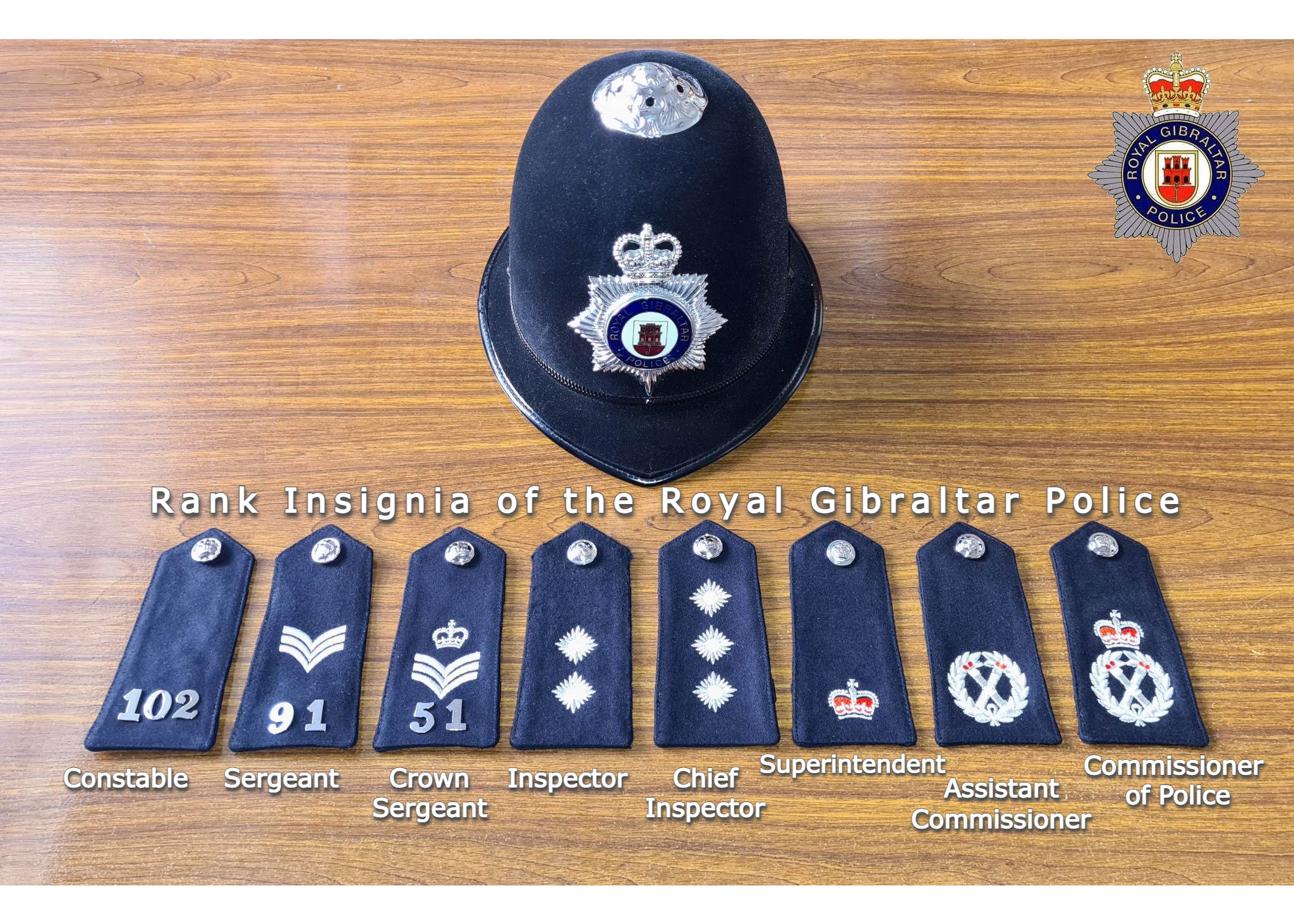Rank Insignia of the Royal Gibraltar Police

Many people outside of Gibraltar might be surprised to learn that the Rock is home to one of the oldest British Police Forces in the world. This is because the Gibraltar Police, as it was first known, was established in 1830, just months after the Metropolitan Police in London. More recently, on the 12th June 1992, the late Queen Elizabeth II conferred the prefix "Royal" to the Gibraltar Police.
Who’s Who in the RGP?
Constable
In January 1875, the first Constables joined the force and their pay was £75 a year. Prior to that, the most senior rank was Sergeant. Constables make up the largest percentage of the RGP’s strength and are the uniformed officers with whom the public normally come into contact. Constables also work in a number of the Crime departments, such as the Criminal Investigation Department, where they are called Detective Constables, who wear smart civilian clothes. When at full complement, the RGP has 197 Constables, who wear epaulettes carrying their number.
Sergeant
In the RGP, epaulettes worn by Sergeants carry three chevrons and their number. Each Response Team (RT) has three Sergeants, who manage frontline constables. Of the three Sergeants on each RT, the most experienced is designated as a Crown Sergeant, signified by a Crown symbol above the three chevrons. The Response Team also has a Custody Sergeant and a Patrolling Sergeant. When at full complement, the RGP has 35 Sergeants.
Inspector
Inspectors plan, manage and monitor operational policing activity across their departments, such as the Response Teams, the Criminal Investigation Department, the Economic Crime Unit and the Roads Policing Unit. They direct the deployment of resources to incidents. An Inspector’s epaulette has two pips. When at full complement, the RGP has 14 Inspectors.
Chief Inspector
There are five Chief Inspectors in the RGP and they are the most senior operational response officers, managing large teams of Inspectors, Sergeants, Constables and police staff. They have more of a managerial role than the Inspector and look at the wider organisation and not just the department itself. For example, a Chief Inspector within the Crime Division will oversee the Drug Squad, Criminal Investigation Department, the Safeguarding Unit, the Designated Risk Managers, the Domestic Abuse Team and Crime Scene Investigation Unit. A Chief Inspector’s epaulette has three pips.
Superintendent
Superintendents form part of the RGP’s Command Team which is responsible for the day-to-day smooth running of the force, alongside the Assistant Commissioner and the Commissioner of Police. There are three Superintendents in the RGP and each is responsible for a division: Crime and Protective Services, the Operations Division and Professionalism. A Superintendent’s epaulette has a single crown.
Assistant Commissioner of Police
The Assistant Commissioner (ACOP) has a similar role to the Commissioner of Police and stands in for the Commissioner when needed. The ACOP ensures that the Command Team delivers what the Commissioner has directed it to do. The Assistant Commissioner is also in charge of discipline within the organisation and the Corporate Services division. The Assistant Commissioner’s epaulette consists of a laurel wreath and crossed tipstaves.
A tipstaff was a long staff made of wood, which was topped with a crown. Dating from the 14th century, the crown could be removed and inside there was a warrant appointing the holder of the Tipstaff to their position of authority. Some tipstaves were used as a means of protecting the officer holding it too.
Commissioner of Police
The RGP’s most senior officer is the Commissioner of Police, a title only used elsewhere in the UK by the Metropolitan Police Service and City of London Police. Most UK police forces use the title Chief Constable.
The Commissioner of Police has responsibility for leading the force, setting direction and providing a professional, effective and efficient policing service. COP’s epaulette consists of crossed tipstaves in a laurel wreath, beneath a crown.